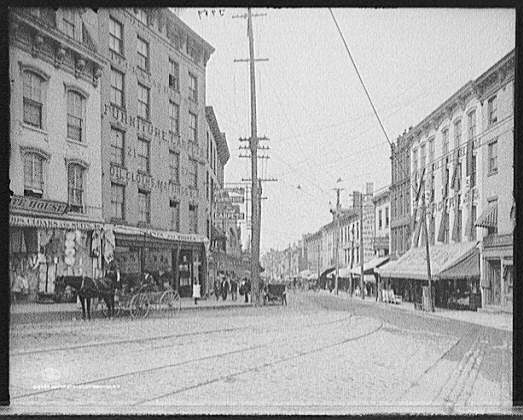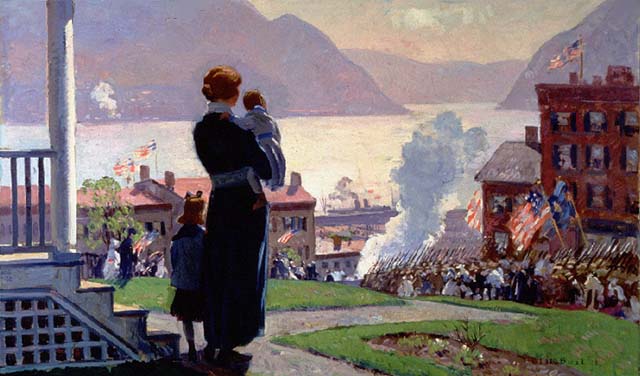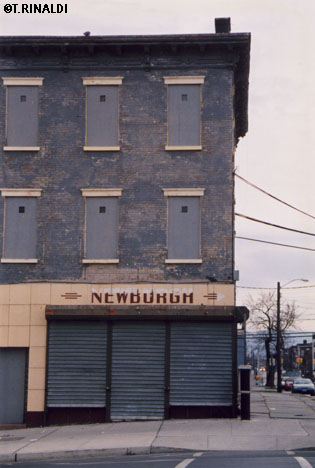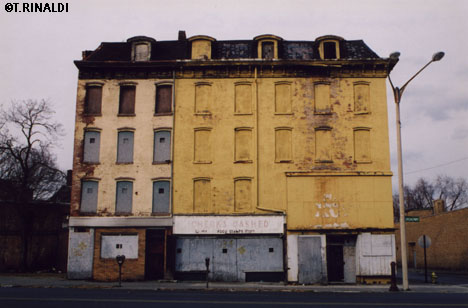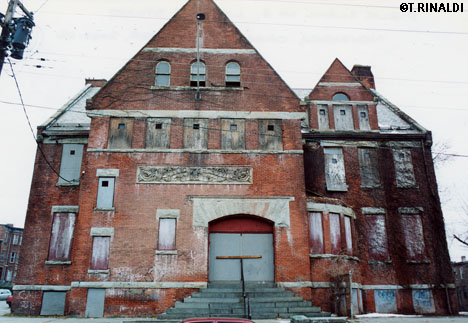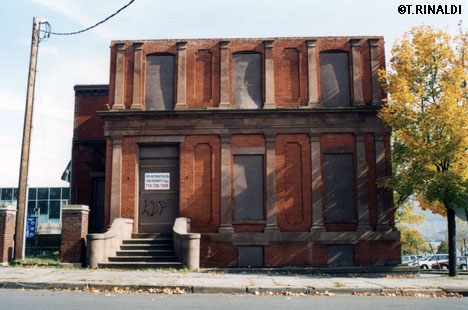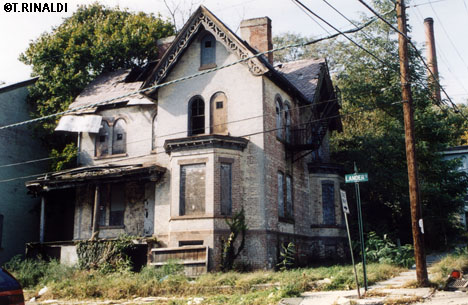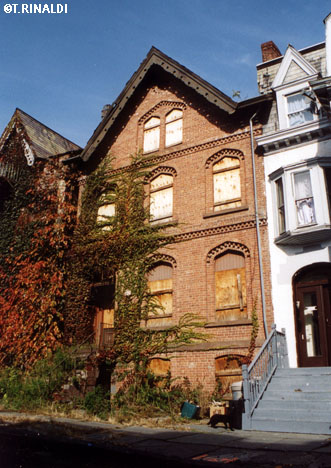NEWBURGH RUINS AS A CHILD, I knew Water Street as something like a parkway, with sweeping lawns on both sides. Years later I found an old postcard which showed the street in better days, lined with old brick buildings that housed department stores, restaurants, apartments and other businesses. Beginning in the mid-1960s, the city razed these buildings wholesale, and proposed large new car-friendly civic centers and housing projects to take their place. Almost every point Jane Jacobs made in her landmark Death and Life of Great American Cities, published in 1961, was summarily ignored by the planners of Newburgh's urban renewal. Forty years later, Jacobs' Death and Life is considered the bible of American urban planning, while Newburgh still faces classic issues of urban decay. Virtually none of the proposed new construction ever came to pass, and today the lots on Martin Luther King, Jr Boulevard (as Water Street has since been renamed) remain empty. IRONICALLY, many of the river towns have seen revitalization start in neighborhoods of attractive, old downtown commercial buildings - the very same sort of buildings tagged for demolition by urban renewal planners in the 1960s and '70s. Conventional wisdom in those years saw such buildings as hopelessly old and decayed, the source of the problem. Today, nearby cities such as Hudson, Kingston, Poughkeepsie and Beacon (the latter situated directly across the river from Newburgh) have found that successful renewal has siezed on those pockets of old buildings that survived demolition. Perhaps part of Newburgh's challenge is that it left fewer pockets of these buildings than other cities. YET DESPITE THE IMMENSE LOSS, Newburgh still retains a trove of great old buildings that one day will clean up beautifully. Just up the hill from the stark empty lawns that flank MLK Boulevard, the architectural character of Broadway and the residential streets to its north and south is still extant. Despite its poor condition, the enormous potential for the recovery of this area isn't as hard to see as one might think. The entire neighborhood is registered on the National Register of Historic Places as the East End Historic District. Attractive, historic houses line its hilly, brick-paved streets, which offer glimpses out to some of the best scenery on the Hudson River. I once hit upon a fascinating, almost grotesque comparison between the East End and the Georgetown section of Washington, DC, where I went to college. Each neighborhood presents an extreme spectacle: Georgetown of wealth and excess, Newburgh one of privation and neglect.
© T.E. Rinaldi, 2006
|
